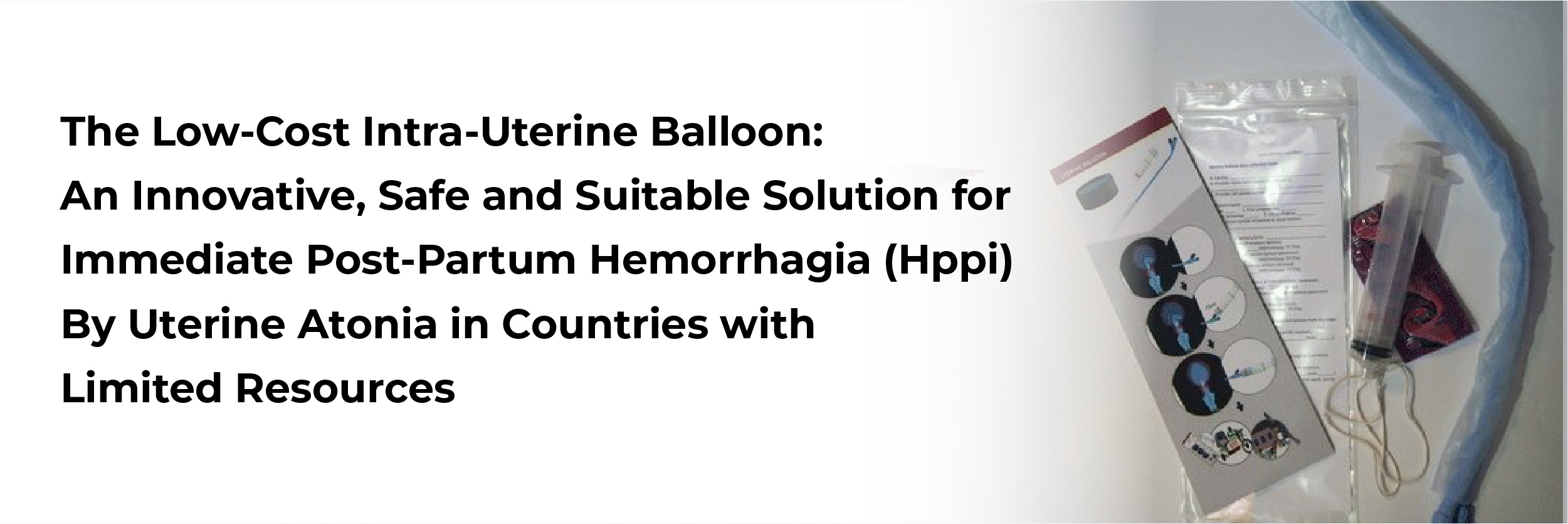
 IJCP Editorial Team
IJCP Editorial Team
The Low-Cost Intra-Uterine Balloon: An Innovative, Safe and Suitable Solution for Immediate Post-Partum Hemorrhagia (Hppi) By Uterine Atonia in Countries with Limited Resources
The major burden of maternal mortality and morbidity is caused by immediate postpartum hemorrhage (IPPH), especially in developing countries. These limited resources countries employ uterotonics (oxytocin, misoprostol), conservative surgery (triple arterial ligation, uterine artery ligation, hypogastric artery ligation, B- Lynch and Cho) and hysterectomy of hemostasis as the therapeutic means. However, these surgical treatments are not feasible by all health providers and are not available at the peripheral level, which witnesses the majority of deliveries.
This necessitates promoting other therapeutic means better suited to these realities. Thus, the World Health Organization (WHO) recommends using the intra-uterine balloon as a second-line treatment for postpartum haemorrhage by uterine atony after the failure of medical treatment and before resorting to surgery. However, their high-cost limits their accessibility to developing countries.
A recent study assessed the efficacy and safety of the low-cost intrauterine balloon in the management of immediate postpartum hemorrhage from uterine atony persisting after medical treatment.
The study included patients who presented an immediate postpartum hemorrhage by uterine atony and were taken in load by the intrauterine balloon.
The following observations were made-
- 50 patients, who qualified the inclusion criteria, were included in the study.
- Their average age was 27 years with an average parity of 2 and an average number of living children of 2.
- The intrauterine balloon was placed within an average of 2 hours 17 minutes after childbirth and removed after an average of 13 hours 58 minutes.
- During balloon insertion, 15 patients were in cardiovascular collapse, with 13 having altered consciousness.
- Uterotonics were employed for prophylaxis in all patients.
- The other therapeutic procedures performed before placing the intrauterine balloon were uterine massage (45/50), uterine revision (24/50), sutures of perineal lesions (18/50), bimanual compression (5 / 50) and the use of misoprostol (50/50).
- 56% of patients received a blood transfusion after insertion of the intrauterine balloon.
- 90% success was achieved in stopping the bleeding and 4 hemostatic hysterectomies were performed.
- 1 case of acute anuric renal failure and 2 maternal deaths were recorded, for a case fatality of 2%.
Thus, the intrauterine balloon can be regarded as an effective, safe and accessible means for the management of immediate postpartum hemorrhage from uterine atony in resource-limited settings.
Niang MM, Mbodji A, Samb F, Thiam M, Sy ED, Cisse CT. The Low Cost Intra-Uterine Balloon: An Innovative, Safe and Suitable Solution for Immediate Post-Partum Hemorrhagia (Hppi) By Uterine Atonia in Countries with Limited Resources. Int Gyn & Women’s Health. 2021;4(5). DOI: 10.32474/IGWHC.2021.04.000196

IJCP Editorial Team
Comprising seasoned professionals and experts from the medical field, the IJCP editorial team is dedicated to delivering timely and accurate content and thriving to provide attention-grabbing information for the readers. What sets them apart are their diverse expertise, spanning academia, research, and clinical practice, and their dedication to upholding the highest standards of quality and integrity. With a wealth of experience and a commitment to excellence, the IJCP editorial team strives to provide valuable perspectives, the latest trends, and in-depth analyses across various medical domains, all in a way that keeps you interested and engaged.





















Please login to comment on this article